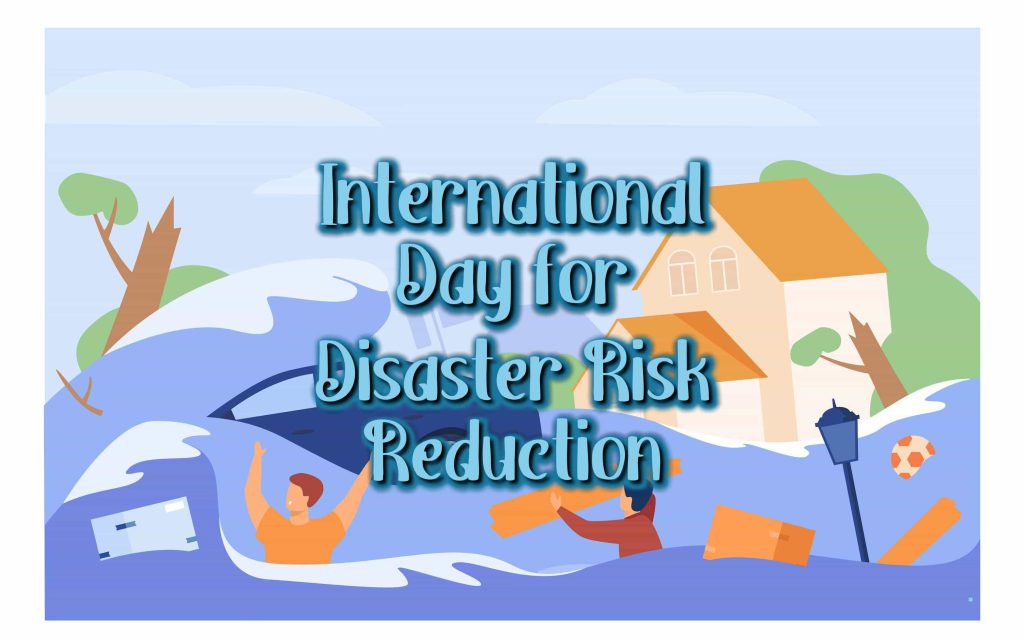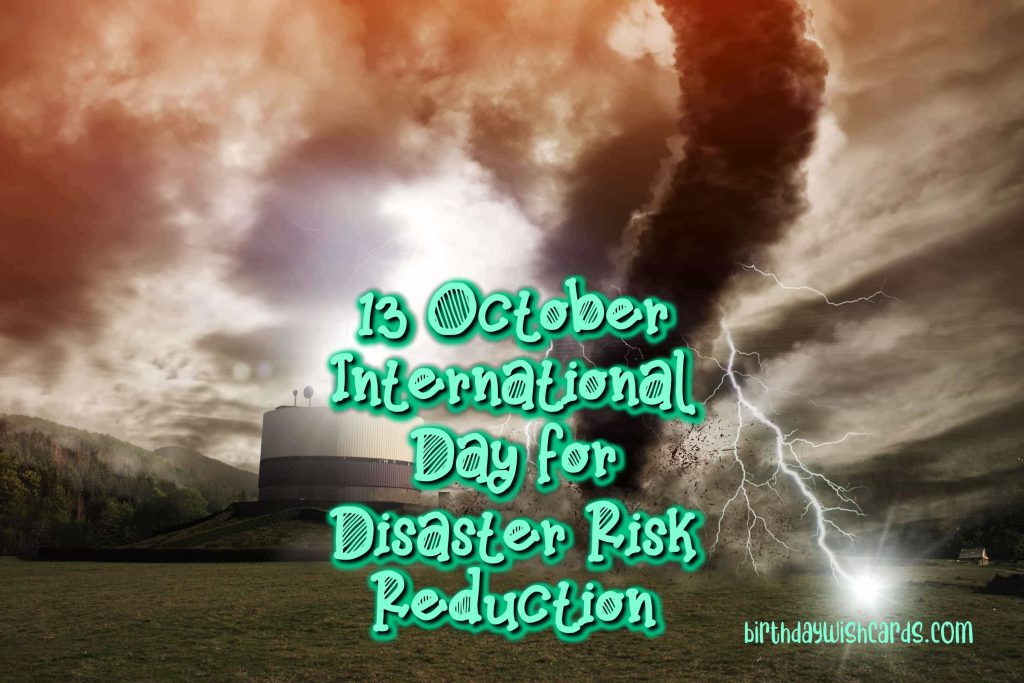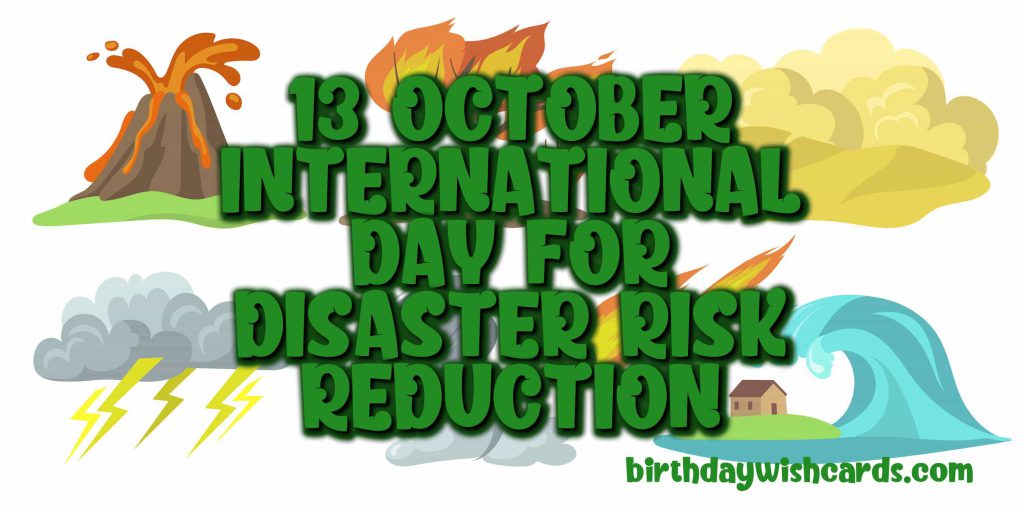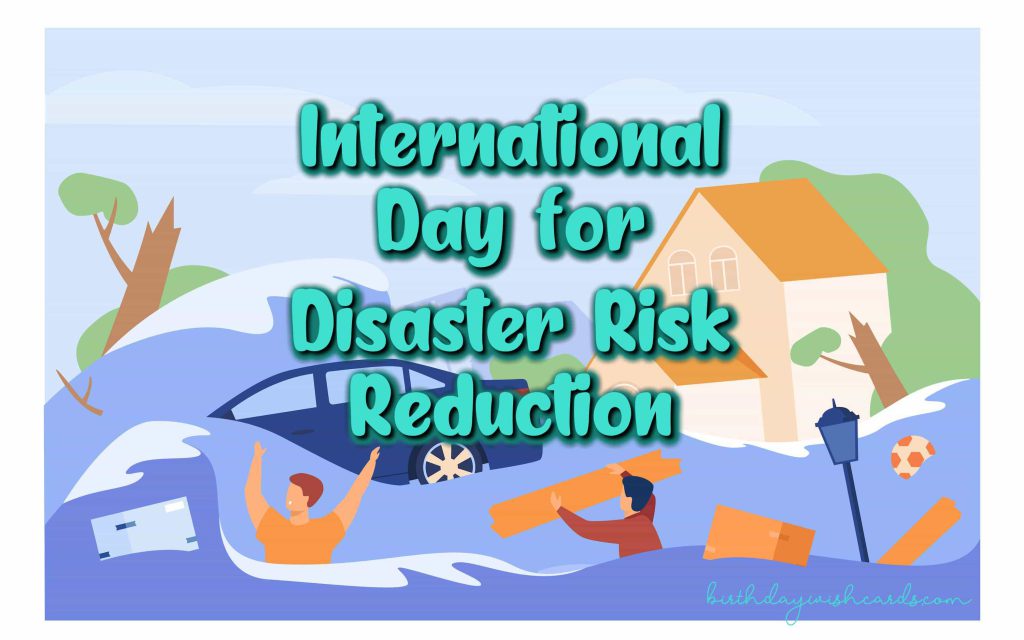
13 October: International Day for Disaster Risk Reduction
Origin and Purpose of the International Day for Disaster Risk Reduction
The International Day for Disaster Risk Reduction (IDDRR) was established in 1989 by a United Nations General Assembly resolution. Observed annually on October 13, this day aims to foster a global culture of risk awareness and disaster mitigation. It showcases how individuals and communities worldwide are working to reduce their exposure to disasters, underscoring the critical importance of managing and mitigating risks.
At the Third UN World Conference on Disaster Risk Reduction in Sendai, Japan, in 2015, it was emphasized that disasters most severely impact communities at the local level, often causing significant loss of life and widespread social and economic disruption. Each year, sudden-onset disasters displace millions, while climate change continues to increase both the frequency and severity of these events, undermining investments in sustainable development and progress toward global goals.
Strengthening disaster risk reduction capabilities at the community level is therefore both urgent and essential. The Sendai Framework for Disaster Risk Reduction, adopted at the 2015 conference, offers a people-centered, action-oriented approach. It addresses risks from both small- and large-scale disasters—whether natural or man-made—including environmental, technological, and biological hazards. This comprehensive framework guides nations and communities in building resilience and reducing vulnerabilities.
COVID-19, Climate Emergency, and Disaster Risk Governance
This year’s International Day for Disaster Risk Reduction focuses on the theme of disaster risk governance. Effective governance is measured by lives saved, fewer people affected by disasters, and minimized economic losses. The dual crises of the COVID-19 pandemic and the escalating climate emergency highlight the urgent need for clear vision, robust planning, and empowered institutions that act on scientific evidence for the public good.
To address these challenges, countries must implement national and local disaster risk reduction strategies by the end of the year, as agreed by UN Member States under the Sendai Framework. These strategies should address both sudden hazards such as floods and storms, as well as systemic threats like zoonotic diseases, climate shocks, and environmental degradation.
Good disaster risk governance requires a multi-sectoral approach, integrating policies across areas such as land use planning, building regulations, public health, education, agriculture, environmental protection, energy, water resources, poverty alleviation, and climate change adaptation. Coordinated action across these sectors is essential to enhance resilience and protect communities from future catastrophes.
Now is the time to intensify our efforts to ensure a more resilient and sustainable planet for future generations.

Key Strategies for Effective Disaster Risk Reduction
Disaster risk reduction is a comprehensive process involving the identification, assessment, and reduction of disaster risks. Its goal is to minimize vulnerabilities and hazards throughout society, to prevent or limit the adverse impacts of disasters.
- Risk Assessment: Understanding the types, frequency, and potential impacts of hazards is fundamental. Risk assessments inform strategic planning and resource allocation for preparedness and mitigation.
- Community Engagement: Local communities are at the forefront of disaster risk management. Their active participation ensures that strategies are culturally appropriate and address the real needs and priorities of those most vulnerable.
- Capacity Building: Training and equipping local authorities, emergency responders, and community members strengthens resilience and improves response capabilities.
- Early Warning Systems: Reliable and timely information dissemination enables people to take preventive action before disasters strike, saving lives and reducing losses.
- Infrastructure Resilience: Developing and enforcing building codes and land use planning reduces exposure to hazards and prevents loss of life and property damage.
- Environmental Management: Protecting and restoring ecosystems such as wetlands and forests can mitigate the impacts of disasters like floods and landslides.
- Policy Integration: Disaster risk reduction must be mainstreamed into development policies and plans across all sectors to ensure long-term sustainability.

Impact of Climate Change on Disaster Risks
Climate change is increasing the frequency and severity of natural disasters worldwide. Rising global temperatures contribute to more extreme weather events—including hurricanes, droughts, wildfires, and floods—which in turn heighten the vulnerability of communities, especially those in low-lying coastal areas and drought-prone regions.
Addressing climate change is therefore inseparable from disaster risk reduction. Adaptation strategies such as resilient infrastructure, sustainable agriculture, and effective water resource management are crucial for mitigating risks associated with climate variability and change.
International frameworks like the Paris Agreement emphasize the need for climate action to reduce disaster risks and protect vulnerable populations.

Role of Technology and Innovation in Disaster Risk Reduction
Advances in technology and innovation are transforming disaster risk management. Modern tools enable better prediction, monitoring, and response to disasters, strengthening community resilience.
- Geospatial Technologies: Satellite imagery, geographic information systems (GIS), and remote sensing help map hazards, assess vulnerabilities, and plan evacuation routes.
- Early Warning Systems: Mobile technology and social media platforms facilitate rapid dissemination of warnings and real-time information.
- Data Analytics and Artificial Intelligence: These technologies enhance risk modeling and decision-making by analyzing large datasets and forecasting potential disaster scenarios.
- Community-Based Apps: Mobile applications empower individuals to report hazards, access emergency services, and receive safety instructions.
Investing in technology and innovation is essential for developing smarter, more effective disaster risk reduction strategies.

Community Resilience and Disaster Preparedness
Community resilience—the ability to anticipate, prepare for, respond to, and recover from disasters—is a central focus of disaster risk reduction worldwide.
Key elements of building community resilience include:
- Education and Awareness: Informing the public about disaster risks and preparedness measures helps foster a culture of safety.
- Local Leadership: Empowering community leaders ensures that risk reduction activities are relevant and sustained over time.
- Resource Mobilization: Access to financial resources, equipment, and supplies enables timely response and recovery.
- Social Networks: Strong community networks facilitate mutual support during emergencies and recovery phases.
By strengthening these aspects, communities can reduce their vulnerability and enhance their capacity to withstand and recover from disasters.

International Cooperation and Funding for Disaster Risk Reduction
Disasters know no borders, making international cooperation vital for effective risk reduction. Collaborative efforts enable knowledge sharing, capacity building, and resource mobilization to support vulnerable countries and communities.
Global initiatives such as the United Nations Office for Disaster Risk Reduction (UNDRR) coordinate international strategies and advocate for integrated approaches to disaster risk management.
Funding is a key enabler of disaster risk reduction. Investments in preparedness and mitigation yield significant economic benefits by reducing recovery costs and losses. Donor agencies, governments, and the private sector all have important roles in financing resilience-building activities.





